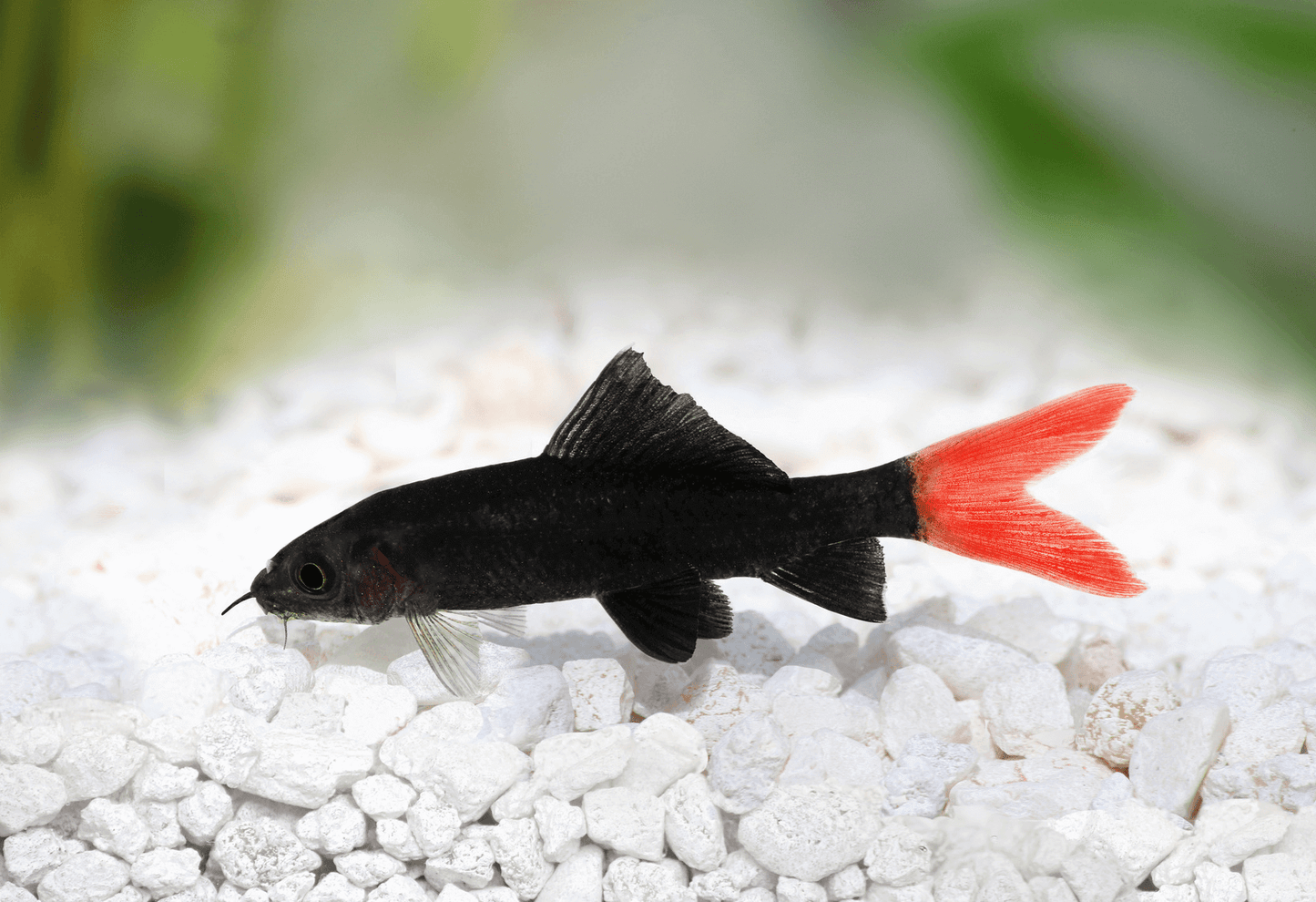Top Fin Aquatics
Red Tail Shark
Red Tail Shark
Couldn't load pickup availability
Red-Tailed Black Shark (Epalzeorhynchos bicolor)
Overview
- Synonyms: Labeo bicolor
- Natural Habitat: Originally found in Thailand’s Chao Phraya basin, but now nearly extinct in the wild due to habitat destruction and pollution. All specimens in the aquarium trade are captive-bred.
- Size: Up to 15 cm (6 inches)
- Temperature Range: 22 - 27°C
- Water Conditions: Adaptable, with a pH range of 6.0 - 7.5 and hardness up to 18 dH
- Compatibility: Can be kept in a community tank with caution
- Lighting: No special requirements
- Special Considerations: Best kept either alone or in a large group to minimize aggression
- Sex Differences: Females are typically fuller-bodied, while males may have a longer dorsal fin
- Diet: Accepts flakes, pellets, granules, algae wafers, and frozen foods
Care & Tank Setup
The Red-Tailed Black Shark is a striking and highly active fish that thrives in a well-structured aquarium. In nature, these fish were once found in seasonally flooded rivers and streams, but due to habitat loss, they are now only available through captive breeding.
These fish are known for their territorial nature, especially in smaller tanks. To reduce aggression, they should either be kept alone or in a large group in a spacious aquarium. Providing plenty of hiding spots using caves, driftwood, and dense planting can help create a more suitable environment.
Despite their aggressive reputation, they are not predators and generally leave smaller fish alone. They can coexist with active, mid-to-upper-level swimmers like barbs, danios, rainbowfish, and tetras.
When first introduced, they may appear pale or washed out, but once settled, their deep black coloration will develop. An albino variation is sometimes available.
Diet & Feeding
Red-Tailed Black Sharks are omnivores and should be provided with a varied diet. They will readily consume:
- Sinking catfish pellets
- Flake and green flake food
- Algae wafers
- Natural algae growth in the tank
- Vegetables such as blanched zucchini and spinach
- Frozen foods like brine shrimp, mosquito larvae, and daphnia
A balanced diet helps maintain their health and vibrant coloration.
Breeding
This species is egg-laying, but natural breeding in home aquariums is rare due to their territorial nature. Most Red-Tailed Black Sharks available in the trade are bred commercially using specialized methods.
Why Choose a Red-Tailed Black Shark?
✔ Bold, striking coloration
✔ Active and entertaining personality
✔ Adaptable to a range of water conditions
✔ Helps control algae growth in the tank
With proper care, a Red-Tailed Black Shark can be a fascinating and rewarding addition to a well-planned aquarium!
Share


